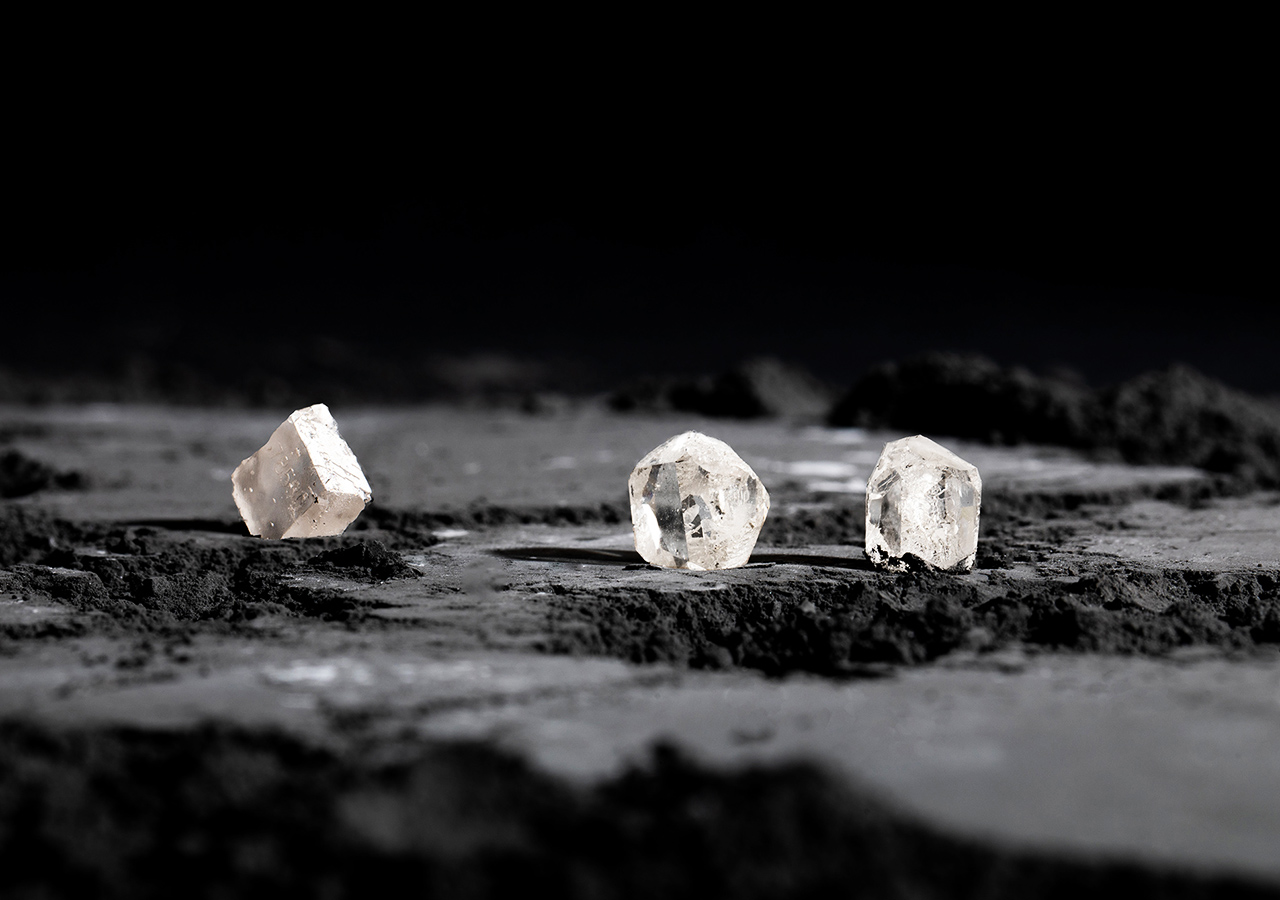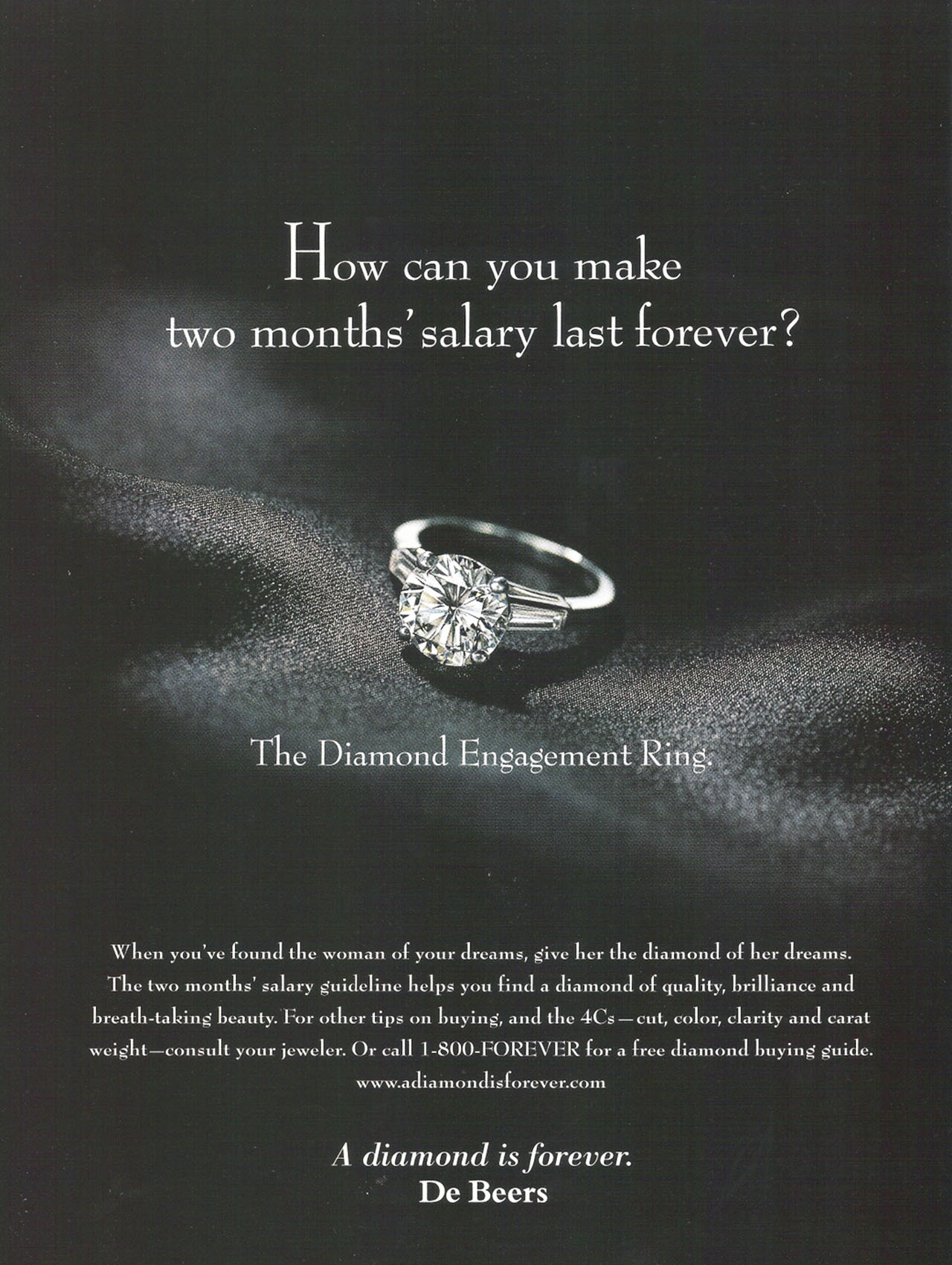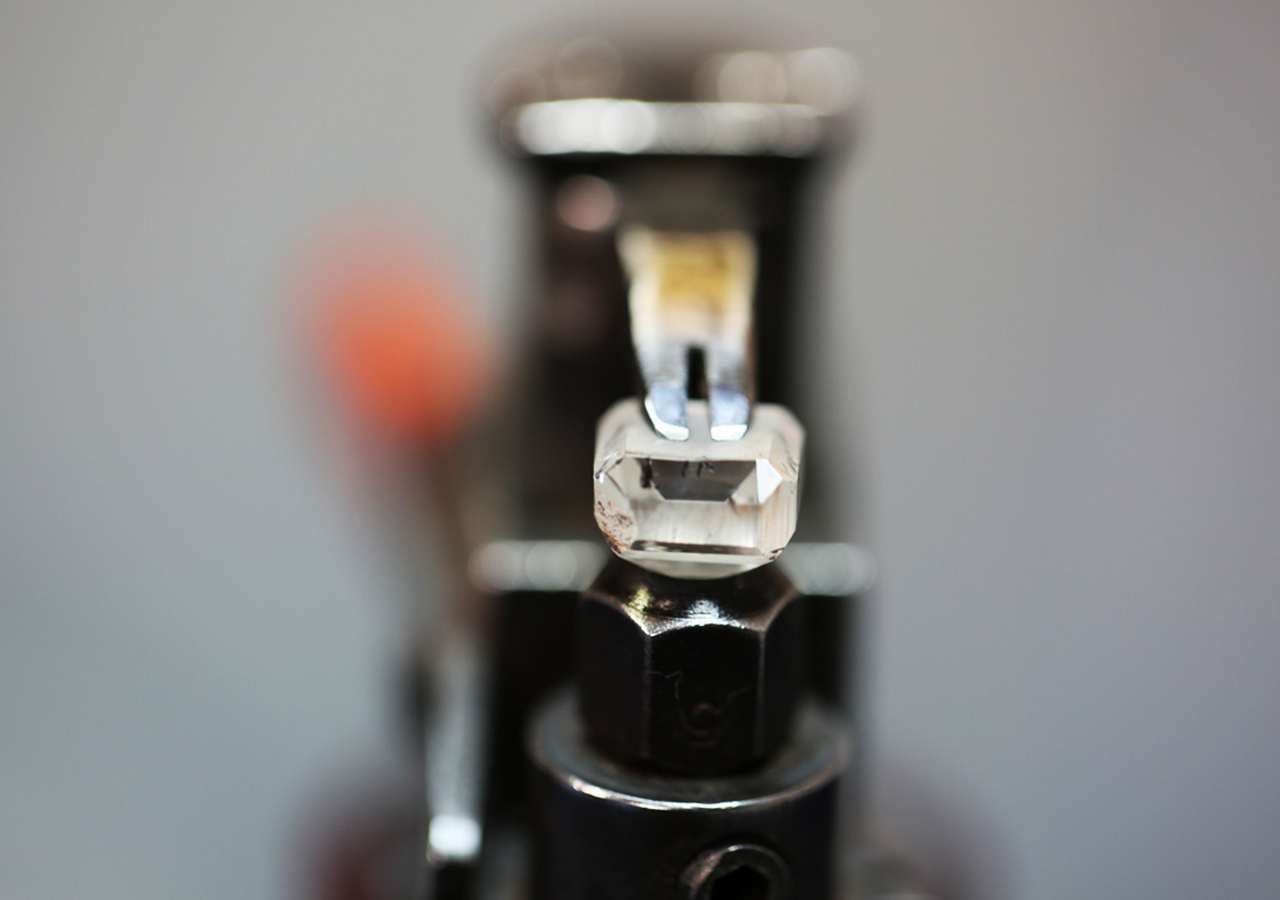Everything

There’s a lot to consider when purchasing a diamond ring. Take it from someone who just underwent the time-honoured tradition of proposing; the whole process can seem incredibly daunting, time-consuming and financially overwhelming no matter which way you look at it. Even the most discerning individual who knows their Tiffany from their Cartier can experience the angst that goes along with deciding on the 4Cs (cut, colour, clarity, carat), a diamond’s shape and setting style and, of course, budget limitations.
Despite the difficulties, we still go through the process because it’s a tradition, right? It’s a right of passage, per se. We’ve been sold the idea that diamonds present the highest sense of value for those looking to declare their eternal love for one another. De Beers – one of the world’s oldest diamond companies – started the trend in 1947 when they coined the phrase ‘a diamond is forever’. As a result, in 2022, did you even get engaged if it didn’t come attached with fresh ice?
Today, one of the biggest debates of the modern era isn’t in fact the size of your diamond ring or how much you paid for it, but whether it’s pulled from the ground or lab-grown.
Across the jewellery and fashion industry, use of lab-grown diamonds is on the rise. The global market for lab-grown diamonds was valued at $19.3 billion in 2020, and is projected to reach $49.9 billion by 2030, registering a compound annual growth rate of 9.4 per cent from 2021 to 2030, according to Allied Market Research. That’s an impressive forecast for an industry most know very little about. But perceptions are changing, the market is younger and brands are seeing the potential to capitalise. Danish jeweller Pandora sidelined its mined diamond production in favour of lab-grown alternatives back in 2020; even De Beers now has a lab-grown diamond subsidiary to its business while players like Silicon Valley-based Diamond Foundry are backed by some of the most affluent individuals in the world, including Leonardo DiCaprio, the founders of Facebook and Twitter, and the founding CEO of eBay.

“As the average price point of lab-diamonds widens further from natural diamonds, I believe that lab-diamonds will attract a whole new customer base for the industry that otherwise could not afford a natural diamond – the opportunity for growth there is quite large,” says Paul Zimnisky, a NYC-based diamond-industry analyst. “But in saying that, global natural diamond jewellery sales broke a new record last year, so interest in natural diamonds is very alive and well.”
Lab-grown diamonds are exactly how you envision them: unrecognisable from their natural alternative. Every single detail is considered, and every single detail, to the naked eye, is indistinguishable from a natural diamond, sparkle and all. The commonalities are so unique, they even share the same optical, physical and chemical properties. Only expert gemologists are able to tell the minute detailing differences under microscopic vision (although, the technology behind lab-grown diamonds has advanced so much at such a rapid pace that experts now require a machine to distinguish between lab-grown and mined gems). The major differences? Natural diamonds take billions of years to form whereas lab-grown diamonds can be produced in under a month. And only lab-grown diamonds can guarantee their origin; you can situate a lab to grow diamonds wherever in the world you want. The same can’t be said about a mine.

“Throughout the process of extracting and cutting minded diamonds, the diamonds pass through many hands until they reach the customer. This convoluted process makes it impossible to know with certainty about their impact on the local communities and the environment and where the diamond mines are located,” explains a spokesperson for VRAI, a modern, digital-first jewellery brand that sustainably grows lab-made diamonds.
“The debate between mined and lab-grown diamonds stems from a lack of understanding surrounding the lab-grown diamond creation process and misleading advertising claims. With the increase in demand for sustainable jewellery options and growth of the lab-grown diamond industry, however, consumer education has progressed significantly.”
While mined diamonds are formed naturally through a combination of heat, pressure and time – they grow deep underground until a volcanic eruption brings them to the surface, ready to be excavated – lab-grown diamonds are created in factories using one of two methods: extreme heat or extreme pressure. The first method, heat, utilises extreme temperatures and pressure in a microwave-like chamber to transform carbon into a diamond. The second method, pressure, sees pieces of carbon layered on a diamond seed in a vacuum chamber. The results look remarkably authentic.
“In 2021, we saw several luxury brands enter the lab-grown diamond market. Why? Because lab grown diamonds are the evolution of diamonds, and have not only been praised for their environmental and ethical practices, but have been featured in high-profile fashion collaborations, further cementing their place in the diamond industry,” says VRAI. “The lab-grown diamond process does not involve the same human toll that mined diamonds do. Lab-grown diamonds are not only produced with renewable energy, but also eliminate the middleman, offering guaranteed origin and transparency.”

Zimnisky predicts that the lab-grown diamond market will nearly double by 2025, reaching $3.9 billion in market size. Lab-grown diamonds will inevitably represent a mid-to-high single-digit percentage of the overall diamond market, further solidifying its status as part of the diamond lexicon.
While the processes involved with lab-grown diamonds are a far cry from the atrocities committed in Africa and other mines around the world that led to one of the greatest human rights disasters in history, they aren’t exactly 100 per cent ‘clean’, either. The labs require an enormous amount of energy to operate. In fact, diamonds that are grown in labs require so much energy that often, a significant output in carbon pollution results if the energy source is dirty. In 2019, a Trucost report found that, on average, greenhouse gas emissions are three times greater for lab-grown diamonds than their mined counterparts.
“Many of the lab-diamond companies claim to be very ‘ethical’ but in actuality, the business practices of the companies in the industry are wide-ranging,” says Zimnisky. “Some are certainly doing better than others, but a lot are just trying to ride the tenuous narrative that all lab-diamonds are ethical or green.”
It’s also important to note that lab-grown and synthetic diamonds are not the same, as it is often perceived. While lab-grown diamonds are atomically identical to mined diamonds, synthetic diamonds are made from synthetic materials and are an alternative option to the two. Common synthetic stones you may have heard of – and are usually the butt of diamond-related jokes – include cubic zirconia and spinel.
It would seem that the battleground ultimately lies with the marketing teams of the diamond community. While the notion that a diamond is this rare, ethereal-like commodity that the industry underpins as the ultimate representation of authenticity, uniqueness and love, lab-grown diamonds are targeted towards a younger demographic who may want to know where their diamond is sourced from, who may not buy into the hype of spending thousands on one stone and who may not want to fit the image of ‘exclusivity’, either. But natural diamonds, as aforementioned, are as popular as ever, and will continue to grow for the foreseeable future. They are also still the go-to for milestone occasions. I can attest to that.

“A diamond ring is so special because it often symbolises significant milestones in your life, like an engagement, wedding, birth. People attach sentimental meaning to jewellery – it’s an age-old notion that has really stuck through history and time,” says Natasha Chipman, co-founder and creative director of luxury Australian jewellery label Natasha Schweitzer. “Diamonds really do represent eternal love, and I don’t think that will ever change, even in years to come.’
Given that natural versus lab-grown diamonds are now virtually basically indistinguishable, a new moral quandary may be on the horizon. Are we obliged to disclose the origin of the diamond your significant other is about to wear? Is there a moral code to follow that entails you should disclose where and how your diamond ring was made for whomever you are gifting it to? To add to this dilemma of diamond proportions, if we know that lab-grown diamonds are more sustainable and of equal – if not more – brilliance plus come baggage free from the politics and bad blood that mines have carried in the past, why do we still instil a higher sense of value on the more problematic option?
While in the preparation stages of popping the big question, I deliberated whether I should go down the path of a lab-grown diamond (much to the horror of my now-fiancé when I floated the idea to her a few years ago). The idea of knowing where it derives from, the ethical transparency behind its operations and the financial benefits far outweighed that of the natural route. Full transparency, I did end up choosing the natural diamond. While I ensured that the jeweller I employed to make my ring was completely ethical and only practised in ethical sourcing of mined diamonds, I did fall trap to the incredibly charming nature of a natural diamond. It was an emotional purchase, and knowing that this natural, precious gem was created by mother earth billions of years ago to live, essentially, an eternity more; that’s a rarity that makes the idea of a natural diamond incredibly special.
As for the future of the diamond industry and whether natural and lab-grown diamonds can co-exist, Zimisky suggests they most definitely can: “I believe the lab-grown diamond industry will continue to grow but perhaps evolve as more of a separate industry from that of natural diamonds. As the average price point of lab-grown diamonds widens further from natural diamonds, I believe that lab diamonds will attract a whole new customer base for the industry that otherwise could not afford a natural diamond. I think the opportunity for growth there is quite large.”